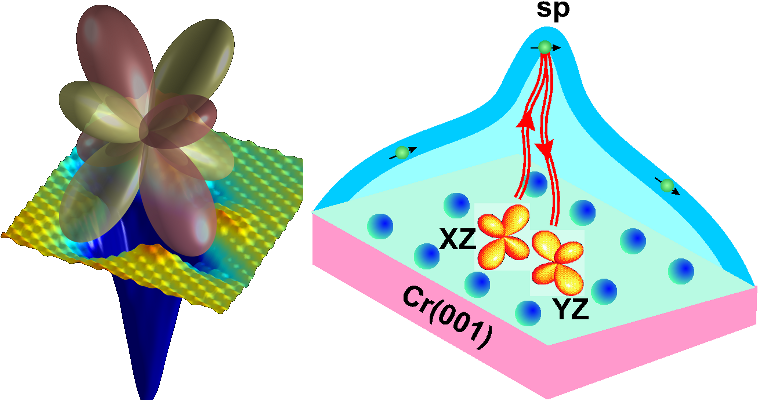Theory of Magnetism and Electronic Correlations
Prof. Dr. Alexander Lichtenstein
The group Magno: The Theory of Magnetism and Electronic Correlations was founded in year 2004. It is a part of the University of Hamburg, Germany. Read the section Contacts for more information how to contact and get to us.
Learn more about future plans on the International Ising Centre of Computational Nanosciences.

Our main research activities are related with fundamental quantum aspects of spin phenomena in nanomagnetic structures. Formation of local spin and orbital magnetic moments, effective exchange interactions as well as different spin, charge and orbital ordering depends crucially on the electronic structure of real nanosystems.
We developed a new theoretical approach for the accurate description of local quantum phenomena for correlated finite fermionic systems in metallic environments. The necessity to go beyond the one-electron approximation has been caused by the failure of the mean-field approach to explain a complex electronic behavior of magnetic adatoms on metallic surfaces.
Dynamical electron-electron correlations become very important on the nanometer scale. An efficient scheme which unifies realistic electronic structure methods (Local Density Approximation within Density Functional Theory) and Dynamical Mean-Field Theory to account for local correlation effects, the so-called LDA+DMFT approach, describes well the electronic structure and magnetic properties of complex materials.
We design the LDA+DMFT approach on the basis of different density functional schemes: Linear Muffin-Tin Orbital (LMTO), KKR-Green functions and Projector Augmented Wave (PAW) methods. The many-body DMFT part of the problem is investigated within the Quantum Monte-Carlo (QMC) scheme, Exact Diagonalization (ED) method or Fluctuation-Exchange approximation (FLEX). Learn more about our researh activities here.
